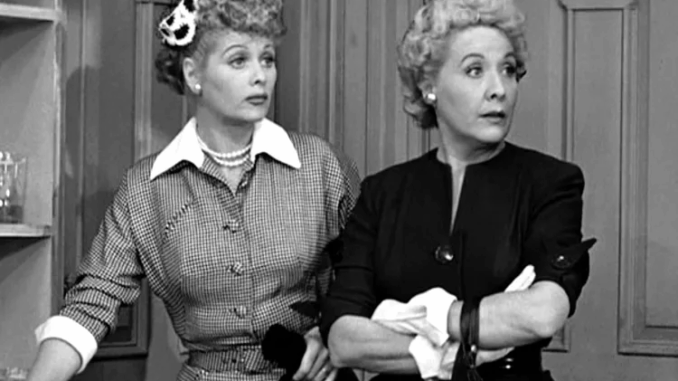
For over 70 years, I Love Lucy has stood as a towering monument in the history of television comedy. Its timeless humor, iconic characters, and brilliant performances have secured its place as one of the most beloved shows of all time. With a flawless track record of classic episodes, from the grape-stomping in Italy to the chocolate factory chaos, it seems impossible that any episode could be genuinely disliked. Yet, according to a consensus among devoted fans and critics, there is one episode that stands out as the most reviled. And the reason for its unpopularity is completely unexpected.
The most hated episode of I Love Lucy is “The Ricardos are Having a Baby,” from Season 2.
This revelation comes as a shock to many, as this episode is not only one of the most famous, but it also contains one of the most significant moments in television history: the birth of Little Ricky. The episode originally aired on January 19, 1953, and a staggering 44 million people tuned in to watch, a number that surpassed the viewership for President Eisenhower’s inauguration the day before. The episode was a cultural phenomenon, a national event that had a profound impact on the television landscape. So, why is it so reviled by today’s fans? The answer lies not in the performance or the comedy, but in its narrative structure.
The episode is a prime example of the show’s genius, showcasing Lucille Ball’s incredible comedic talent as Lucy navigates her impending childbirth. The comedy is perfectly timed, the emotional beats are earned, and the climax is genuinely heartwarming. However, the reason for its low ranking is because the entire episode is a clip show. It’s a series of flashbacks, a compilation of clips from previous episodes, loosely tied together by the plot of Lucy being in labor. The episode relies on a simple premise: as Lucy’s labor progresses, she and Ricky reminisce about their lives together, specifically the moments that led to this happy occasion.
For modern viewers, who are used to the fast pace of streaming and binge-watching, clip shows are often seen as a cheap and lazy form of storytelling. They are seen as filler episodes, designed to give the cast and crew a break, and they rarely offer anything new to the story. In today’s era of television, a clip show would be seen as a blatant disrespect to the audience’s time.
However, in the 1950s, the context was completely different. Television was a new medium, and the concept of “binge-watching” was non-existent. Fans didn’t have the luxury of watching reruns, and a new episode was often the only time they could see their favorite characters. A clip show was a novel concept, and it allowed the audience to relive some of the most memorable moments from the past season. It was a nostalgic look back, a way of celebrating the show’s journey with its audience. In fact, many of the show’s original fans enjoyed the episode for this very reason.
But for modern viewers, the episode feels jarring and out of place. It’s a bait-and-switch. You tune in for a dramatic and emotional moment—the birth of a baby—and instead, you get a compilation of scenes you’ve already seen. The anticipation of the birth is there, but the emotional payoff is delayed and diluted by the repetitive nature of the format. This is a common complaint among contemporary viewers who find the episode boring and unoriginal.
Another factor that contributes to the episode’s unpopularity is that it fails to stand on its own as a single, cohesive story. A great I Love Lucy episode, like “Job Switching” or “Lucy and the Oldest Fan,” has a clear beginning, middle, and end. The comedy builds, the characters face a problem, and they resolve it in a hilarious way. “The Ricardos are Having a Baby” lacks this narrative momentum. It is a collection of moments rather than a complete story, and this lack of narrative cohesion is a major turn-off for modern audiences.
The episode’s reputation is a fascinating case study in how television viewing habits and expectations have changed over the decades. What was once a groundbreaking and celebrated episode is now seen as a tired and uninspired relic of a bygone era. It’s a stark reminder that the way we consume media today is vastly different from how our grandparents did. The instant gratification of streaming services and the constant availability of content have made us far less patient with episodes that don’t push the story forward.
Despite its status as the most disliked episode, it’s important to acknowledge its historical significance. “The Ricardos are Having a Baby” broke viewership records, and its success proved that television could be a powerful medium for shared cultural experiences. It also paved the way for future television shows to explore major life events like childbirth, something that was rarely seen on television before. So while the episode may be unpopular with today’s audience, its legacy is undeniable. It’s a flawed masterpiece, a product of its time that, while not holding up to modern standards, remains a crucial piece of television history.
